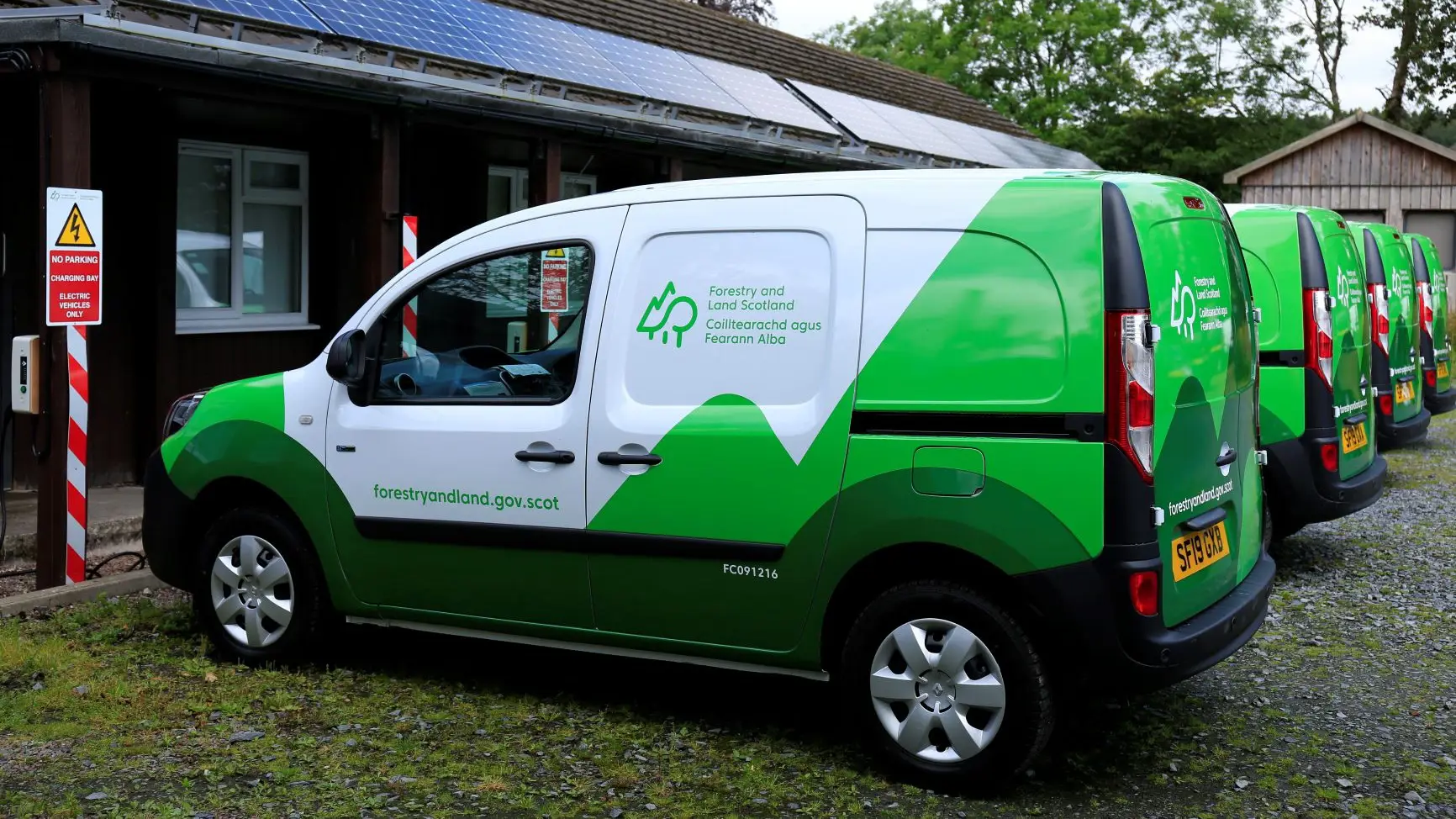Everyday actions
Everyday actions
Small changes, big effects
We’re involved in some incredible projects that help to mitigate the effects of the Climate Emergency. And we do work every day which improves biodiversity and helps Scotland become greener. But we aren’t stopping there.
We’re a large organisation with around 1,000 employees based across Scotland. We operate a fleet of vehicles for travel and forestry use, and numerous offices, hubs, depots, and visitor centres. Acting on everyday working practices is vital for us to become a greener organisation. To help reach Net Zero, and to adapt to the changing climate we’re looking closely at our business processes, land management practices, and infrastructure to ensure everything we do makes us more sustainable.
Net Zero is a balance. Despite new cleaner technology, cutting emissions out completely is unfeasible. Net Zero is a state of balance which means an equivalent amount of emissions will be sequestered, as are emitted. The Scottish Government has committed to achieving a Net Zero society by 2045. This is five years ahead of the rest of the UK. Renewable energy can help to achieve this by providing energy with less emissions as can the planting of more trees which remove CO2 from the atmosphere.
Over the last century sea levels have risen, temperatures have increased, and rainfall patterns have changed, with more flooding. These changes are projected to continue and intensify over the coming decades. We need to make adjustments to adapt to the impacts, and seize new opportunities now and into the future. Adapting to climate change is, and will be, necessary regardless of how much we manage to cut our emissions, due to historic emissions causing changes in our climate. Taking early action to adapt will help increase resilience and reduce risks.

That means we’re taking action on several routine operations, like:
- Vehicles: We're replacing petrol and diesel vehicles with electric equivalents. Thus far, almost 20% of our fleet are electric or hybrid and we will add a further 30 electric vehicles to our fleet in the coming financial year (25/26).. This will reduce our emissions substantially. To support this, we're installing charging points at many of our To support our electric and hybrid fleet. We currently have 119 scattered across our forests. We hope to double this in the next 18 months as we continue towards a greener fleet.
- Buildings: We have buildings of all types across Scotland, including offices, visitor centres, storage units, workshops and more. Upgrading windows, lighting and insulation in these buildings can go a long way to reducing energy waste, and make them more efficient to operate. In 2020 we upgraded 10 buildings to modern standards which will help reduce our energy usage and emissions.
- Plastic: Plastic is the one of the biggest symbols of an unsustainable world. Where we can, we’re cutting out plastic for eco-friendly alternatives. In some of our forests, we’re trialling biodegradable tree tubes to protect saplings. In offices and visitor centres we're cutting out single-use plastic in favour of reusable or biodegradable materials. We’ll continue looking for alternatives to reduce our waste.
- Innovation: Like every organisation, we aim to become more efficient. By working with the pioneering CivTech program we've already trialled and introduced new technology to make our work go further. Programs like Tape4Trees and SilviBio have allowed us to increase the speed we can plant seedlings, and ensure as many seeds as possible can germinate. Advances like these will help us reduce wastage and become more efficient and effective in our roles.
- Adaptation: We have been adapting our forests and land to the changing climate for years, but with increased understanding of the current and future impact of climate change we are accelerating our efforts to adapt. For every land management plan our teams carefully consider the impact of climate hazards and incorporate management options to ensure our forests are fit for the future. Additionally, they look for opportunities to deliver co-benefits that seek to address both the climate change emergency and biodiversity crisis. Having conducted a national climate change risk assessment, we are more aware of our risks and vulnerabilities. That’s why we are developing an Adaptation Strategy and Adaptation Plan to ensure we minimise risks, build resilience, and seize new opportunities.
If Scotland is to reach Net Zero by 2045 and adapt to the changing climate, we all need to do our part. We’re focused on doing our part for forestry, and we’re determined to take action in every part of our organisation.